What Types of Ticks Carry Lyme Disease? 7 Common Types
-
Jeff Weishaupt
- Last updated:
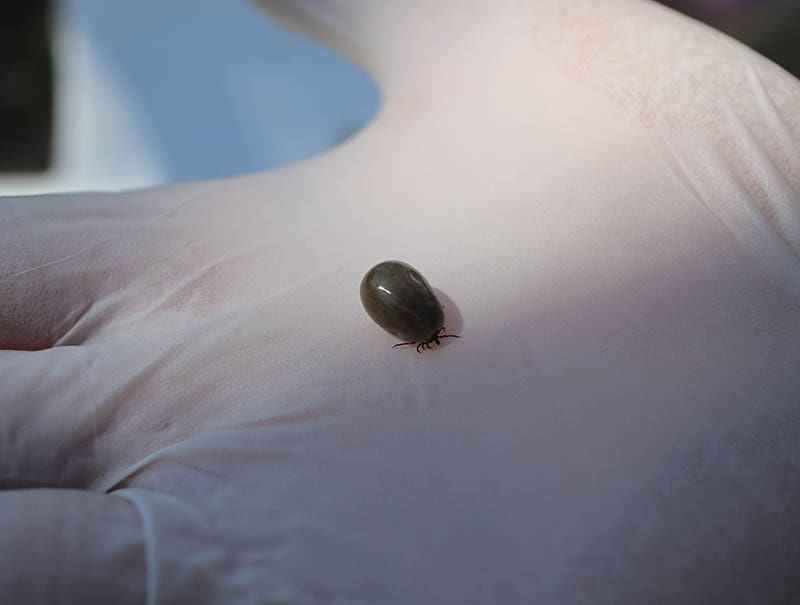
Ticks are widespread in our environment, posing a threat to humans all over the globe. The US has two major families of ticks: hard ticks (Ixodidae) and soft ticks (Argasidae). Hard ticks consist of 700 species, while soft ticks have about 200 species worldwide.
Of these, only a few ticks are identified to carry diseases and transfer them to humans. Ticks look like spiders and belong to the arachnids group. But unlike spiders, ticks take their nourishment from mammals’ blood, including humans, birds, rodents, and pets.
So, what types of ticks carry Lyme disease and related illnesses? Hard ticks are the primary carriers of such diseases. Unlike soft ticks, they have a hard, round plate-like shell over their bodies.
Let’s check 7 disease-causing ticks and learn about their different characteristics.
The 7 Types of Ticks That Carry Lyme Disease
1. Blacklegged “Deer” Tick
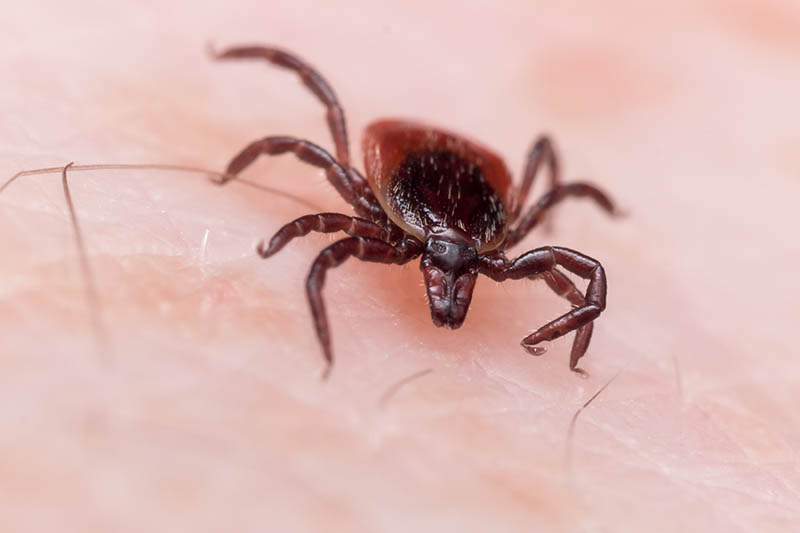
| Color | Reddish-orange |
| Habitat | Similar to birds and large and small mammals, such as rodents, squirrels, deer, coyotes, and livestock |
| Scientific Name | Ixodes Scapularis |
Deer ticks are reddish-orange with jet-black legs and shields. They are known to carry multiple diseases, especially those related to Lyme disease. These include Borrelia burgdorferi and Borrelia mayonii, which are Lyme disease agents.
A deer tick can also spread relapsing fever, babesiosis, and deer tick virus.
Deer ticks can also spread Bartonella to humans, particularly those who spend their time outdoors near grass, bush, and leaves. These ticks bite humans throughout their life cycle.
If you live in the Northeast or Upper Midwest areas of the US, you’re likely to encounter these ticks. Unfortunately, they are widespread across the entire country. Remember that the adult ticks look for the host when the temperature drops or goes above freezing.
2. Lone Star Tick
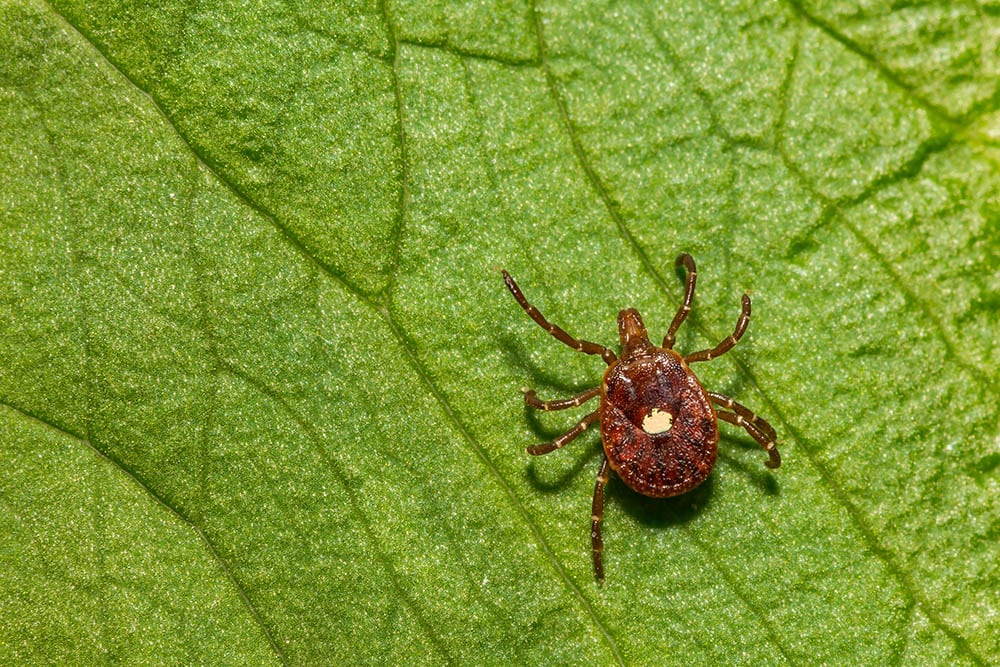
| Color | Reddish-brown |
| Habitat | Wooded areas, including second-growth forests with dense underbrush close to where white-tailed deer live |
| Scientific Name | Amblyomma Americanum |
The lone star tick is reddish-brown with a distinctive “lone star” on the back of the females. The star looks like a white dot. The nymph and adult lone star ticks can transfer human monocytic ehrlichiosis (HME), Rocky Mountain spotted fever (RMSF), Bourbon virus, Q fever, Heartland virus, and tick paralysis.
You’re more susceptible to these ticks residing in the Eastern and Southern US. They are fierce biters and are most active during early spring and late fall.
The lone star ticks are popular for causing “alpha-gal allergy” in humans. It is a delayed reaction in humans upon consuming red meat.
3. Western Black-legged Tick
| Color | Red |
| Habitat | In grassy coastal areas near deer trails, thick woodlands, fir needles, fallen logs, branches, undersides of benches and tables |
| Scientific Name | Ixodes Pacificus |
Western black-legged ticks have black legs and shields. They are one of the most well-known Lyme disease agents, also carrying Borrelia miyamotoi, which causes a relapsing fever called Borreliosis. These ticks also transmit human granulocytic anaplasmosis (HGA), babesiosis, and ehrlichiosis.
Western black-legged ticks can also transfer Bartonella to humans. They can bite at every life stage, but nymphs and females are the primary carriers.
You’re at a higher risk of coming in contact with these ticks in California, Washington, Nevada, Oregon, Utah, and Arizona. They commonly live on lizards, foxes, squirrels, mice, coyotes, and migrating birds.
4. Pacific Coast Tick
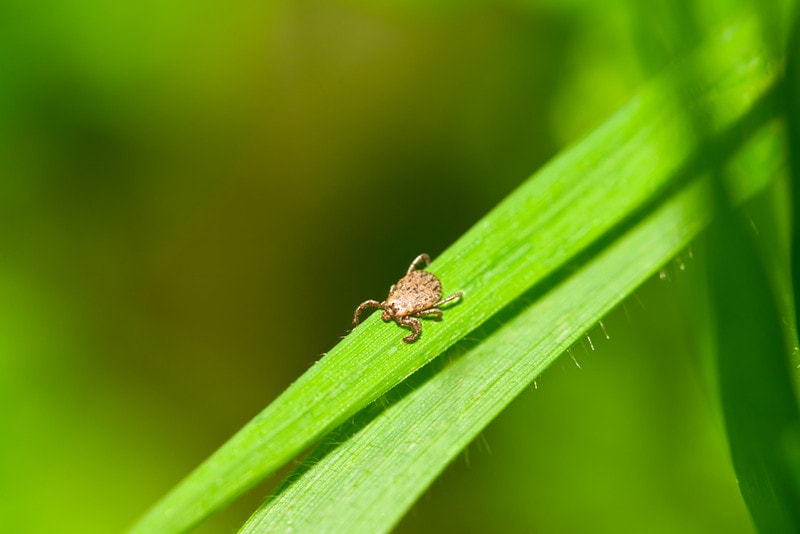
| Color | Brownish-black |
| Habitat | Shrublands, bushes, and small trees |
| Scientific Name | Dermacentor Occidentalis |
With a distinctive mottled brown-black appearance, the Pacific Coast ticks are widespread in the southwestern regions of the US. They are also spread in California, Mexico, and Oregon.
Like most ticks, the Pacific Coast ticks also transmit various diseases, including Rocky Mountain fever, Colorado tick fever virus (CTFV), and Pacific Coast tick fever. They also carry Rickettsia, which causes Q fever, Rickettsia philippi, and the Tularemia-causing bacterium.
Pacific Coast ticks bite, leaving a wound-like mark similar to spiders and insects.
5. American Dog Tick
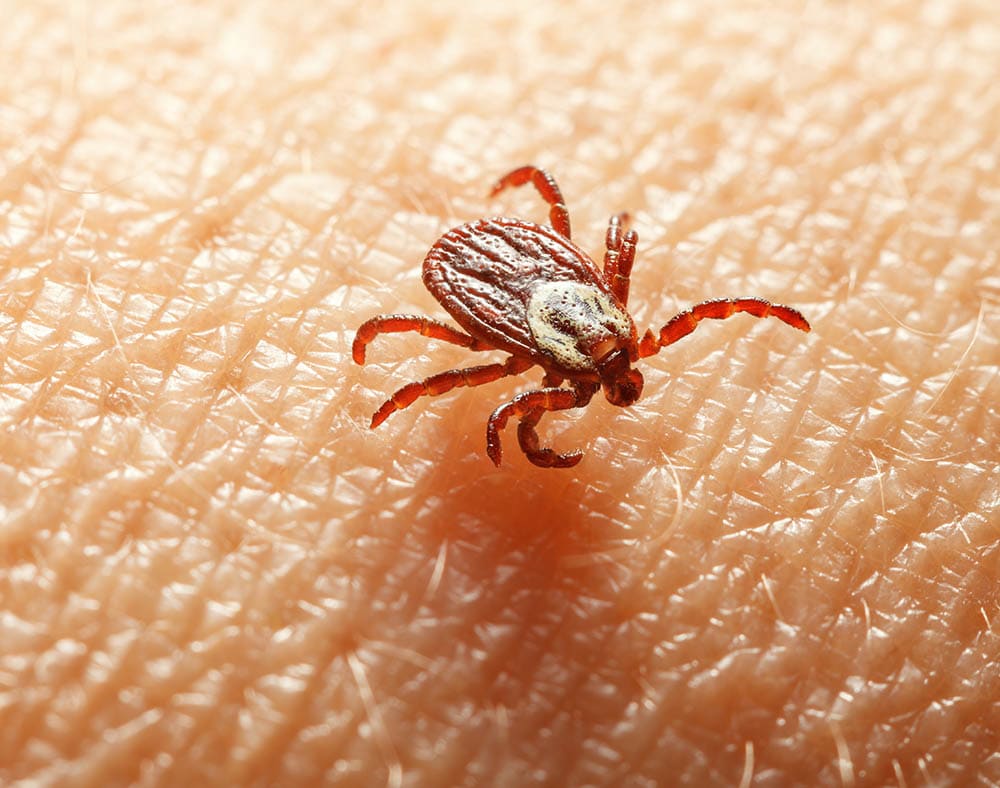
| Color | Dark brown |
| Habitat | Areas with little to no tree covers, including tall grassy regions, brush, and twigs, along walkways and trails |
| Scientific Name | Dermacentor Variabilis |
The male American dog ticks are mottled-dark, while females have a pale-white shield. They bite in almost every stage of life, but adult females are the most dangerous. The risk of getting bitten is high during the summer and spring months.
American dog ticks are the primary carrier of Rickettsia rickettsii which causes Rocky Mountain spotted fever. They also transmit illnesses similar to Lyme disease, such as Tularemia and tick paralysis.
These ticks are prevalent in the Eastern Rocky Mountains, along the East and Gulf Coast, the Pacific Coast, or in Canada and Alaska.
6. Brown Dog Tick

| Color | Reddish-brown |
| Habitat | Heavy vegetation, tall grasses, dog beds, kennels, and any place where dogs live |
| Scientific Name | Rhipicephalus Sanguineus |
The brown dog tick is narrower than other ticks, with the tendency to spread diseases at all life stages. Dogs are the major hosts for these ticks all over the world. They can thrive outdoors and indoors, especially where dogs live.
Brown dog ticks transmit a range of diseases similar to Lyme. They also carry Rocky Mountain spotted fever and spread different types of fevers to humans. These ticks also spread diseases related to dogs.
If you’re a pet owner, especially of dogs, you must keep an all-time check on brown dog tick infestations. Keep your dog’s kennels, house, and bed clean 24/7. But in case you suspect the presence of these ticks in your house, treat your yard, pet house, and every area in your home where your dog goes.
7. Groundhog Tick
| Color | Light brown or blond |
| Habitat | Near the areas where small animals live, especially groundhogs, skunks, raccoons, squirrels, and minks |
| Scientific Name | Ixodes Cookei |
The groundhog or woodchuck tick are the primary agents of Powassan virus disease in humans. It is found across the entire eastern region of the US.
These ticks consider various warm-blooded animals their primary hosts, including foxes, squirrels, weasels, and groundhogs. Although not the primary carrier of Lyme disease, groundhog ticks carry multiple similar diseases like tularemia, rabies, and diarrhea.
If you have ground dogs or skunks in your yard, make sure to sanitize your home now and then.
How to Identify Lyme Disease in Humans
If you suspect a tick has bitten you, thoroughly observe the affected area. One of the early signs of Lyme disease is a circular rash around the bitten part, which typically becomes visible within 1–4 weeks.
Such a rash can appear darker or lighter from the center. It can be flat or a little raised and has a pink, purple, or red color on light skin. People with darker skin tones may find it challenging to see the rash, as it looks like a bruise.
It may spread slowly and last for many weeks if not treated well. You won’t feel itchy or inflamed but may experience a few flu-like symptoms, including:
- A high temperature
- Feeling hot
- Shivering
- Headache
- Fatigue
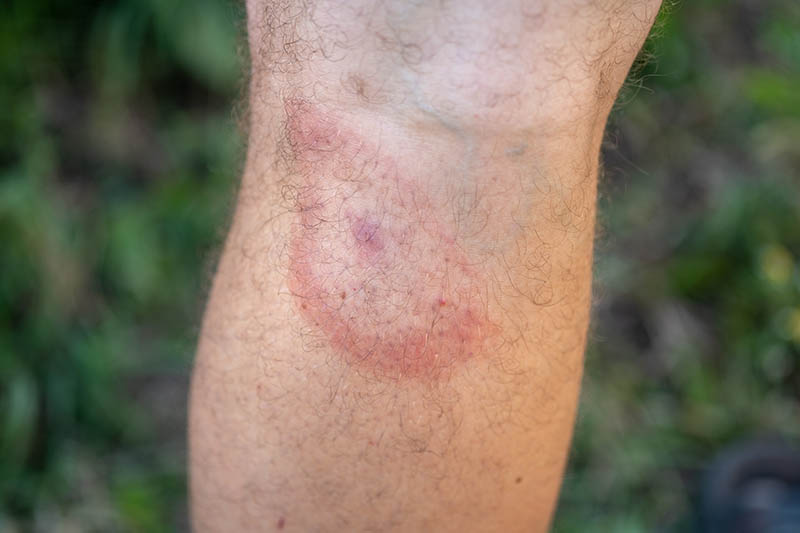
Over time, Lyme disease can worsen and cause:
- Joint pain
- Swelling in joints
- Nerve pain or numbness
- Heart issues
- Memory or concentration issues
It’s better to always check with a doctor as soon as you suspect a tick bite. Early treatment can save you from long-term issues.
Conclusion
Lyme disease is a tick-borne disease mainly caused by the ticks of the genus Ixodes. Ticks are everywhere, picking up different disease-causing bacteria and transferring them to humans and pets. They host mainly mammals and stay nourished.
Ticks are the primary vectors of Lyme disease. However, the other ticks on this list can cause illnesses like Lyme disease.
Always keep your home and pets sanitized and seek medical attention whenever a tick bites you.
Featured Image Credit: JuroX, Shutterstock
Contents

